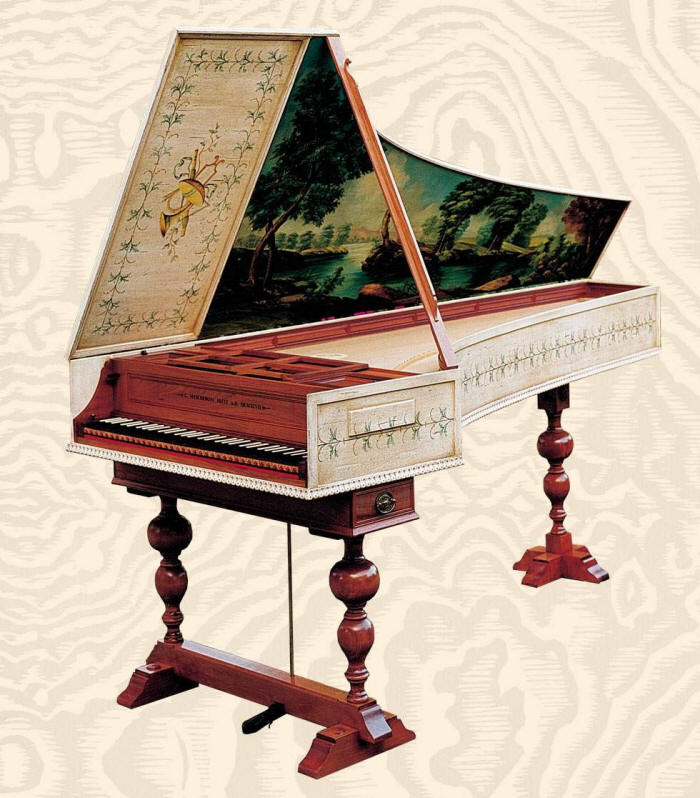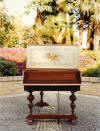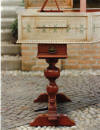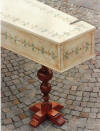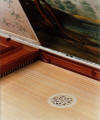|
HARPSICHORD-FORTEPIANO OF ITALIAN SCHOOL
Planned by Carlo Mascheroni, this instrument was suggested by the harpsichord- fortepiano built by Giovanni Ferrini in 1746. This two-manual instrument by the pupil and admirer of the work of Bartolomeo Cristofori, that is part of the Tagliavini collection, uses two different types of mechanics, the one of the harpsichord and the one of the fortepiano, set in action respectively by the inferior manual and that superior one. The particularity of the HARPSICHORD-FORTEPIANO planned by Carlo Mascheroni consists in the fact that both mechanics are set in action by a single keyboard, whose movement ahead or behind allows the insertion of the pen register or that of the hammeri one. Therefore the instrument, by conserving nearly intact the proportions of the harmonic plan of the "Ferrini", maintains the same aspect and the same easy handling of an Italian harpsichord and appears within the harpsichord literature as « GRAVICEMBALO CON REGISTRI DI PENNA E DI MARTELLI PER IL PIANO E IL FORTE », placing itself ideally in the period that goes from the end of the ' 600 to the first decades of the ' 700, the years in which Cristofori and Silbermann experienced constructive solutions for new sonorous possibilities.
estensione Fa-Sol per 63 tasti registri: 2x8' indipendenti - registro di martelli diapason: 415 pedale di risonanza dimensioni: cm.230x97x26
|
